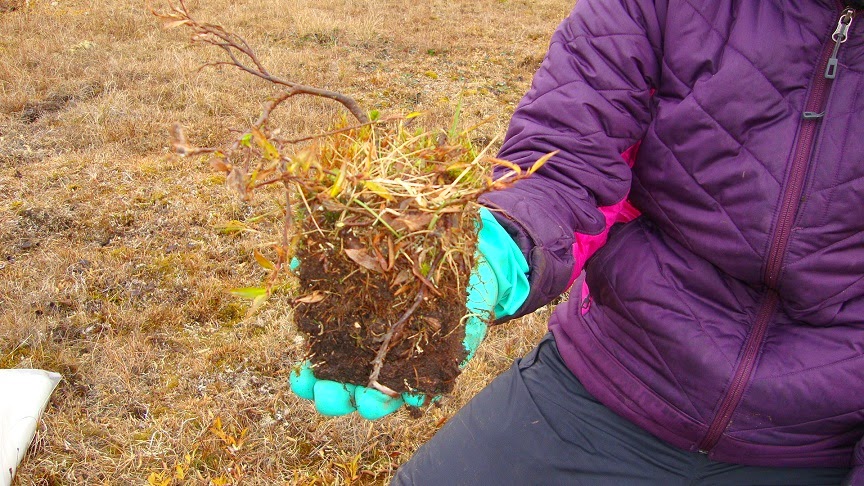Today Cathy, Go, Larry, and I left our apartment and stepped
out into the windy, cold, and unusually rainy weather. It was slightly annoying
at the time, but surely the weather would get better right? As we pulled sleds
full of our equipment to the field we soon realized that the sun was not going
to appear, that the winds were not going to subside, and that the rain was not
going to stop. On the contrary, this was going to be (not withstanding
mosquitos) one of the more miserable days on the tundra that I have experienced
in the last three years.
Once at the field site Cathy unpacked our Guelph Permeameter
that she had purchased some time ago from Soil Moisture Equipment (Santa
Barbara, CA). The equipment can be transported, assembled, and operated presumably
by one person. However, we found that in rainy weather with winds upwards to 20
mph that two people were needed to stabilize the unit, position the tripod, and
get it ready for operation. Once assembled, the permeameter enabled measurements
of Ksat to be determined in 35 minutes to an hour. Although all the
calculations still need to be completed, it is clear that Ksat values for the
silty soils commonly found across our field sites on the Barrow Environmental
Observatory (BEO) are low. This means that water movement, especially lateral
movement, is very slow. Our team has noticed this in trying to collect samples
for water chemistry, etc. It is simply difficult to get water from these soils.
We think that once incorporated into models, the consequences of low Ksat – now
that we have direct measurements – will become evident in the distribution of
water across the landscape and the cascade of other processes of
biogeochemistry and vegetation dynamics. We should know more about this before
too much longer…





























.jpg)


.jpg)
.jpg)
.jpg)




















